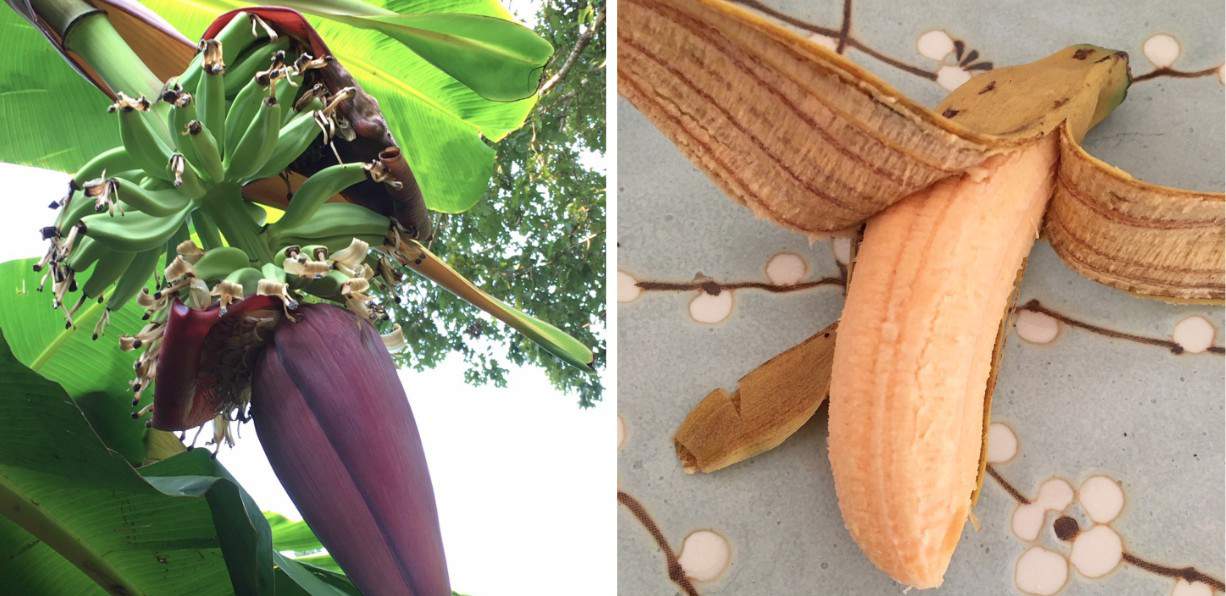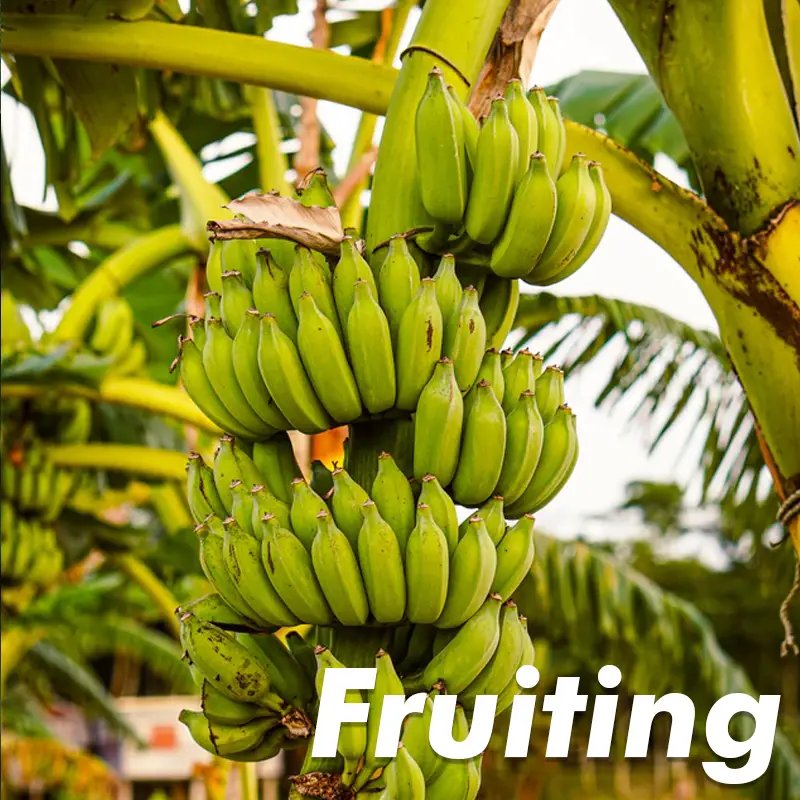Yes, you can grow bananas in South Carolina. They are a subtropical plant that does well when temperatures stay above freezing and there is plenty of sunshine and warmth. The best way to do this is to find an area with full sun exposure and soil that drains quickly but retains moisture.
Plant the banana corms (or “pups”) 2-3 ft apart so they have enough room to spread out. Keep them watered regularly and fertilize every other month during the growing season with a balanced fertilizer such as 10-10-10 or 8-8-8. They will need protection from cold winter temperatures, either by covering them or moving them indoors for the colder months.
With proper care, you should be able to enjoy fresh home grown bananas in South Carolina!
- Step 1: Select a Suitable Location – Choose an area in your yard that gets at least 8 hours of full sun per day
- Plant the banana trees near a fence or wall to provide shelter from strong winds, and make sure there is plenty of room for the plant’s roots to spread out without any obstruction
- Step 2: Prepare the Soil – Amend the soil around the planting site with organic matter such as compost or well-aged manure
- This will help improve drainage and aeration while providing essential nutrients for healthy growth
- Step 3: Plant Your Banana Tree – Purchase a rhizome (a mass of underground stems) from your local nursery center or online retailer, then dig a hole twice as wide as root ball and just deep enough so it sits slightly above ground level when planted
- Place the rhizome inside and cover with soil, pressing lightly to ensure good contact between soil and roots before adding mulch like wood chips or shredded leaves on top
- Step 4: Water Regularly – Bananas require consistent moisture during their growing season; water them every few days if rainfall is less than one inch per week
- Reduce watering frequency during winter months but do not allow plants to dry out completely in order to prevent damage due to cold temperatures! Step 5: Mulch & Fertilize – Apply an organic fertilizer once every two months throughout summertime, following package instructions closely; use fresh mulch each springtime too keep weeds away from banana tree roots while retaining moisture levels in surrounding soil

Credit: www.tyrantfarms.com
What States Can You Grow a Banana Tree?
Banana trees are an exotic and beautiful addition to any garden, but did you know that they can be grown in certain parts of the United States? While banana trees won’t survive in every state, there are several where they will thrive. You can grow a banana tree in states along the Gulf Coast such as Texas and Louisiana, as well as California.
Other states like Hawaii, Florida, South Carolina and Georgia also have warm climates suitable for growing bananas. Keep in mind that if you live outside these areas with cooler climates or lower temperatures during winter months, your banana tree may not survive year-round. But even then it is possible to enjoy bananas from your own backyard by bringing the plant indoors during colder weather so it doesn’t die off.
If you provide enough warmth and light indoors (either through a greenhouse or sunroom) you should be able to keep your banana tree alive until springtime when you can take it outdoors again!
How Many Years Does It Take a Banana Tree to Bear Fruit?
Banana trees are one of the hardiest and most productive fruit-bearing trees in the world, with a lifespan of up to 20 years. They take about 9 months from planting until the first fruits appear, but it takes 3 or 4 years for a banana tree to reach full production capacity. This means that once you plant a banana tree, you can expect to start harvesting its sweet yellow fruits within three years or so!
The best part is that when properly cared for, your banana tree will continue producing delicious bananas year after year. It’s important to remember though that if left unchecked and not given proper care, your fruiting times may be delayed by several months as well as lower yields at harvest time. So make sure you give your banana trees plenty of TLC throughout their life cycle – they’ll thank you for it with many tasty treats!
What is the Lowest Temperature a Banana Plant Can Tolerate?
Bananas are an incredibly resilient plant, capable of surviving in a wide range of temperatures. The lowest temperature that a banana plant can tolerate is generally between 32 and 50 degrees Fahrenheit (0 to 10°C). In colder climates, it’s not uncommon for the leaves to die back when temperatures dip below 41°F (5°C), but they will typically survive if given adequate protection from extreme cold.
When temperatures drop below 32°F (0°C), however, the roots may suffer irreparable damage that could kill off the entire plant. It’s important to note that banana plants cannot tolerate frost, as this causes permanent damage to their foliage and stems. To protect banana plants in areas where there is a risk of frost or freezing temperatures, it’s best to provide some form of insulation such as mulching or covering them with blankets overnight during particularly cold snaps.
Can I Grow a Banana Tree in My Backyard?
Growing a banana tree in your backyard is certainly possible, but it can take some effort to make sure it grows properly. First, you will need to choose the right variety of banana tree for your climate and region. You also need to provide plenty of light and water.
The soil should be well-draining and rich in organic matter; adding compost or aged manure can help with this. Banana trees prefer tropical climates with temperatures between 60-90 degrees Fahrenheit, so if you live in an area where temperatures dip below freezing during winter months, you may need to protect the trees from cold weather by placing them inside a greenhouse or using frost cloths over them when necessary. Additionally, bananas are heavy feeders so they require regular fertilization throughout their growing season (April through October).
Be sure that any fertilizers used are free from chemicals as bananas are sensitive to chemical treatments. Lastly, keep an eye out for pests such as mealybugs which can damage the plants’ leaves; pesticide sprays can effectively control these pest populations if needed. With proper care and attention given to temperature requirements, fertilizer needs and pest protection measures taken into consideration, you should have success growing a healthy banana tree in your backyard!
Common Man Grows 518 Edible Bananas in South Carolina ~ Proof of Climate Change?
Carolina King Banana Tree
The Carolina King Banana Tree (Musa acuminata ‘Carolina King’) is an incredibly popular tropical fruit tree that produces delicious, large yellow-green bananas. Its long and slender leaves make it a great choice for any garden or patio setting. It’s easy to grow and requires minimal maintenance – simply water regularly during the summer months and fertilize every few weeks!
The banana tree also has good cold tolerance, making it ideal for growing in warmer climates. With its sweet flavor, beautiful foliage, and reliable production of large bunches of tasty fruits, the Carolina King Banana Tree makes a great addition to any home gardener’s patch!
Can You Grow Bananas in North Carolina
Yes, you can grow bananas in North Carolina! As long as you are located in the warmer parts of the state, such as along coastal areas or near mountains, it is possible to create a climate suitable for growing bananas. However, they must be grown inside greenhouses and protected from extreme cold temperatures during winter months.
With proper care and protection from frosty weather conditions, banana plants can produce edible fruit within 2-5 years after planting.
Basjoo Banana Tree
The Basjoo Banana Tree is a tropical plant native to Japan that produces large, edible fruit. It grows up to 25 feet tall and can survive temperatures as low as 10°F when dormant. The tree’s leaves are greenish-yellow and its fruit is high in potassium and vitamin C, making it an excellent source of nutrition for humans and animals alike.
Additionally, the Basjoo Banana Tree is drought tolerant, making it ideal for gardens with limited water resources.
Banana Plants for Sale near Me
For those looking to add a tropical touch to their garden, banana plants are an easy and rewarding choice. With a wide variety of hybrid varieties available in many local nurseries and online retailers, finding banana plants for sale near you should be no problem at all. They require minimal upkeep and can produce large bunches of delicious fruit year after year – making them the perfect addition for any home gardener!
Cutting Back Banana Plants
Bananas are the world’s most popular fruit, but growing them can be tricky. To keep your banana plants healthy and productive, it is important to cut back the plant periodically. This involves cutting any dead or dying leaves off of the stem as well as removing any suckers (small shoots) that emerge from underneath the main stems.
Doing this will help prevent disease and allow for more efficient use of nutrients within the plant. Additionally, trimming back a few inches of new growth each year can also help promote air circulation through the canopy which improves overall health and yields higher quality fruits in return.
Can You Grow Bananas in New York
Bananas are a tropical fruit, and while they may not grow on trees in New York City, it is possible to cultivate them in the areas of the state with warmer climates. With enough sun, warmth and moisture, bananas can be grown outdoors during the summer months in certain parts of upstate New York. If you live in a cooler area of New York State like Buffalo or Rochester, you can still enjoy homegrown bananas by growing them indoors if you have sufficient light and heat for them to thrive.
Banana Tree Transplant Shock
When transplanting a banana tree, it is important to be aware of the effects that shock can have on your plant. Transplant shock occurs when a banana tree experiences abrupt environmental changes such as temperature change, light intensity, or soil pH levels. When this happens, the plant’s growth can become stunted and its leaves may turn yellow or brown.
In order to avoid transplant shock, it is important to make sure that the new environment is suitable for your banana tree by providing enough sunshine and water while slowly acclimating the plant with an appropriate fertilizer program.
Dwarf Banana Tree
The Dwarf Banana Tree is a popular tropical plant that produces delicious, sweet fruits. It grows to only about 8 feet tall and can be grown in pots or directly in the ground. The leaves are wide and long with reddish veins running through them, while the edible yellow fruit has a creamy texture and mild flavor.
With minimal care, this attractive tree will produce an abundance of tasty bananas year-round!
Conclusion
In conclusion, it is possible to grow bananas in South Carolina with the right climate and care. Although they may not produce edible fruit, plants grown from tissue culture are more likely to survive the winter and can provide some beautiful foliage for your garden. With a little effort and patience, you could be growing your own tropical banana plants in no time!


